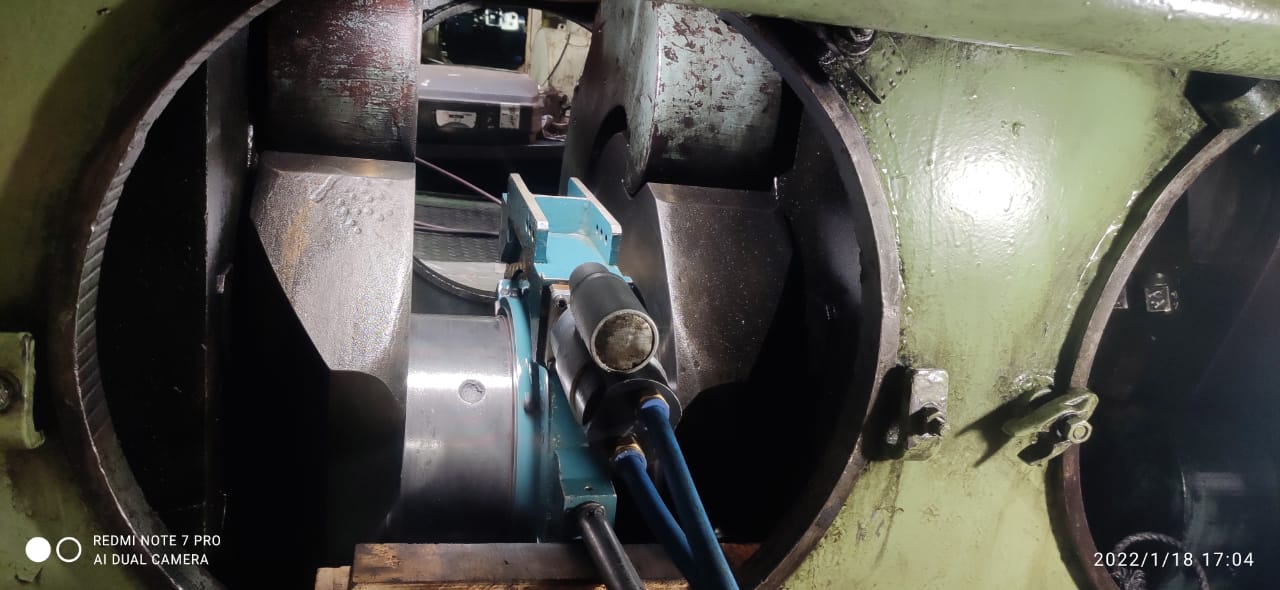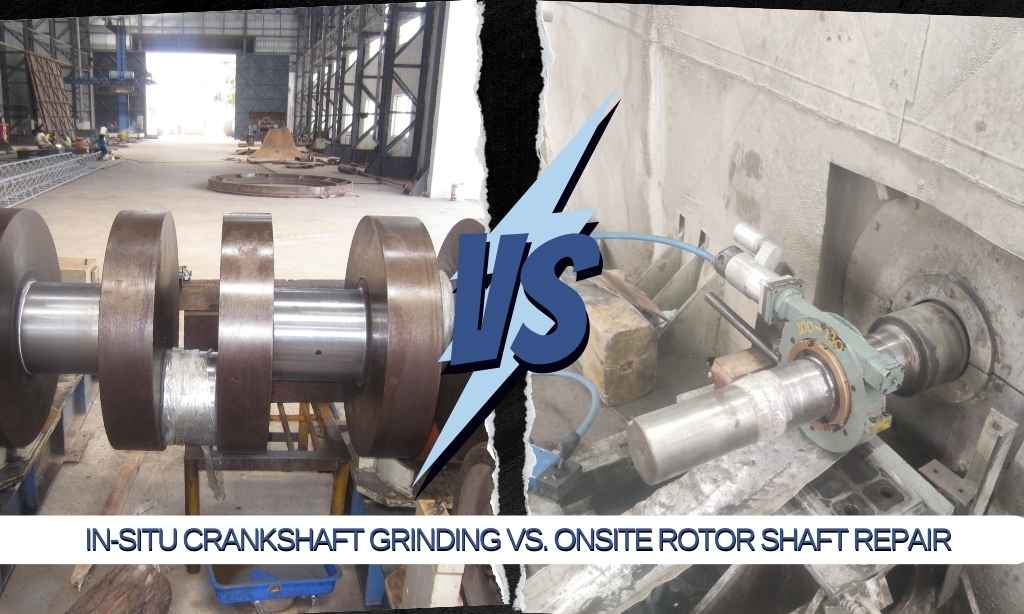the crankshaft is probably the most important part of an engine. It’s what turns the pistons up & down into rotation, and that’s what powers the engine. If the crankshaft is not well made, the engine will not run correctly and may just stop working altogether.
Proper maintenance and timely crankshaft repair are important for engine efficiency. A damaged crankshaft can cause vibration, reduced fuel efficiency and, in some cases, premature engine failure. If ignored, the problem may result in costly repairs or the whole engine replacement.
This blog will help you choose the right crankshaft repair service. A reliable repair service ensures that your engine runs smoothly, lasts longer, and saves you money. We will discuss important factors to consider, such as experience, tools, and customer reviews, so you can make the best choice for your Vessel / Plant needs.
Understanding Crankshaft Damage & Repair Needs

The crankshaft is part of the engine where pistons move and turn. The engine crankshaft repair is essential because the crankshaft puts power to the engine. If you damage it, you’ll not be able to drive it properly. There are some common signs of crankshaft issues:
Common Signs of Crankshaft Issues:
1. Unusual Engine Vibrations:- A sign that the crankshaft is not balanced or damaged is unusual engine vibrations.
2. Knocking Noises – If the crankshaft is worn it can make loud knocking noises out of the engine. This happens when bearings wear out or there is excess movement.
3. Low Oil Pressure Warning – Without oil, the crankshaft doesn’t move smoothly, but if it is damaged, the flow of oil may lessen, which triggers the low oil pressure warning on your dashboard.
4. The Engine Shaking – A problem with the crankshaft position sensor or damage to the crankshaft itself can cause the engine to shake.
5. Metal shavings in engine oil:- If you see a few little bits of metal in the engine oil, it is probably because your crankshaft or bearings are rusting.
If you notice any of these signs, get your engine checked immediately. Ignoring these crankshaft signs can cost you big money and cause complete engine failure.
Types of Crankshaft Repairs:
The crankshaft is an important part of the engine, and if it gets damaged, it needs proper repair to keep the engine working. And here are some of the common types of engine crankshaft repair:-
1. Grinding and Polishing
Grinding and polishing the minor wear or rough surfaces of the crankshaft will restore its smoothness and performance.
2. Straightening
It happens sometimes that the crankshaft will bend from heat or pressure. Hence, straightening it out will bring it back to its original shape, preventing engine problems.
3. Welding and Rebuilding
If there are big cracks or worn-out areas, then the crankshaft can be rebuilt and welded back to its original strength and durability.
4. Journal Reconditioning
Those journals inside the crankshaft, i.e. where the crankshaft turn, tend to wear down over time. Reconditioning these journals helps proper oil flow and proper operation of an engine.
5. Crack Detection and Repairs:-
Small cracks can lead to major failures. Special tests, such as magnetic crack detection, help find these cracks and have them repaired before they cause any damage.
Factors to Consider When Choosing a Crankshaft Repair Service

A. Experience & Expertise in Crankshaft Repairs
Experience is very important when it comes to crankshaft repair because it requires precise machines. Having a trained and experienced staff is important so they can ensure repairs are made correctly and prevent future engine trouble.
Also, look at whether they specialize in the type of engine you have, in power plant, Cement plant, Steel Plant, marine engines, etc. and check the certifications and training they’ve received. A well experienced and trained team is more likely to deliver the good work.
B. Advanced Equipment & Technology Used
Modern technology helps put a lot of effort into crankshaft repair service. Pneumatic orbital grinding machines are used to ensure precision, while measurement tools can be used to control the rotational angle.
Non-destructive testing (NDT) techniques are used to detect cracks without damaging the crankshaft itself. Choose a repair shop with the latest tools to get a better result.
C. Reputation & Customer Reviews
A company’s reputation speaks about its service quality. You can look online for reviews and testimonials about past customers, or you can ask for case studies and before-and-after reports so you can see what they’ve done in the past.
Be cautious while choosing a repair shop because too many bad reviews or complaints about poor service, hidden charges, or incomplete work can be the warning signs.
D. Quality Assurance & Warranty Policies
Good crankshaft repair service shops should offer a warranty to back up their services. Having a warranty covers issues after the repair.
Ensure they do quality inspection on your crankshaft before they return it, so the repair will last longer and the engine will work properly.
E. Turnaround Time & Availability
Crankshaft repair service can take days, depending on what damage is done and the availability of parts. Oftentimes, a busy shop will have longer waits.
If you need immediate repairs, ask if they offer emergency services or on-site repairs. Always ask for an estimated completion time before confirming the service.
F. Cost vs. Value
Crankshaft repair costs vary based on damage and service quality. The cheapest option isn’t always the best, as poor repairs can lead to bigger problems. Ask for a detailed cost breakdown to avoid hidden charges.
A fair price should include labor, materials, and testing. Always balance cost with quality to get the best value.
DIY vs. Professional Crankshaft Repair: When to Seek Expert Help

Crankshaft repair service requires extreme precision, and DIY attempts at repair can often do more harm than good. Some basic mistakes like crankshaft grinding improperly, not aligning correctly, or polishing unevenly can further damage the crankshaft.
If there is severe wear, if the crankshaft is bent, then professional repair is recommended for such deep cracks/wear, or a bent crankshaft. CNC grinders and NDT (non-destructive testing) are used in professional repair to guarantee the best results.
While minor cleaning or lubrication can be done at home but major repairs need expert assistance. If you notice: Engine knocking, low oil pressure, metal shavings in the oil – call us right away.
Questions to Ask Before Hiring a Crankshaft Repair Specialist
1. Which repair techniques are you using?
A crankshaft repair specialist may use techniques like metal spraying, welding, polishing, and Crankshaft grinding to repair damage. Find out what methods they employ and why. The type of engine and the degree of damage determine the best approach, which guarantees durability and long-lasting performance.
2. Do you give a written estimate before starting the repair work?
Before beginning any repair work a qualified professional should give a detailed written estimate. Costs for labor, parts, and extra services should all be included in this estimate. A written estimate helps avoid unexpected charges and ensures transparency, so you know exactly what to expect before approving the repair work.
3. Can you show previous repair works or any references?
A competent crankshaft grinding repair expert should be able to provide references from previous clients or show their previous work. This helps in determining their level of expertise and experience. Selecting a trustworthy professional who provides top-notch service is ensured by looking at customer reviews or completed repairs.
4. How do you guarantee precision and quality?
Crankshaft repair precision is essential for engine operation. To ensure precision an expert makes use of sophisticated instruments, micrometers and balancing devices. To ensure smooth engine operation, quality checks like alignment testing and tolerance measurement help verify that the repaired crankshaft satisfies industry standards.
Conclusion
Selecting the best crankshaft repair service is essential to maintaining engine performance and preventing expensive malfunctions. Crankshaft damage can result in engine failure, knocking noises and vibrations. Finding a repair service with experience with cutting-edge equipment and a solid reputation is important.
Checking out the customer reviews and turnaround time can also help you make smart decisions. Although DIY repairs might seem like an option, hiring a professional guarantees long-lasting results.
By choosing a trustworthy engine crankshaft repair service, you can increase the life of your car and its performance and reduce future repair costs. Contact a reputable crankshaft repair expert right now to maintain the best possible condition for your engine before it’s too late!











No Comments